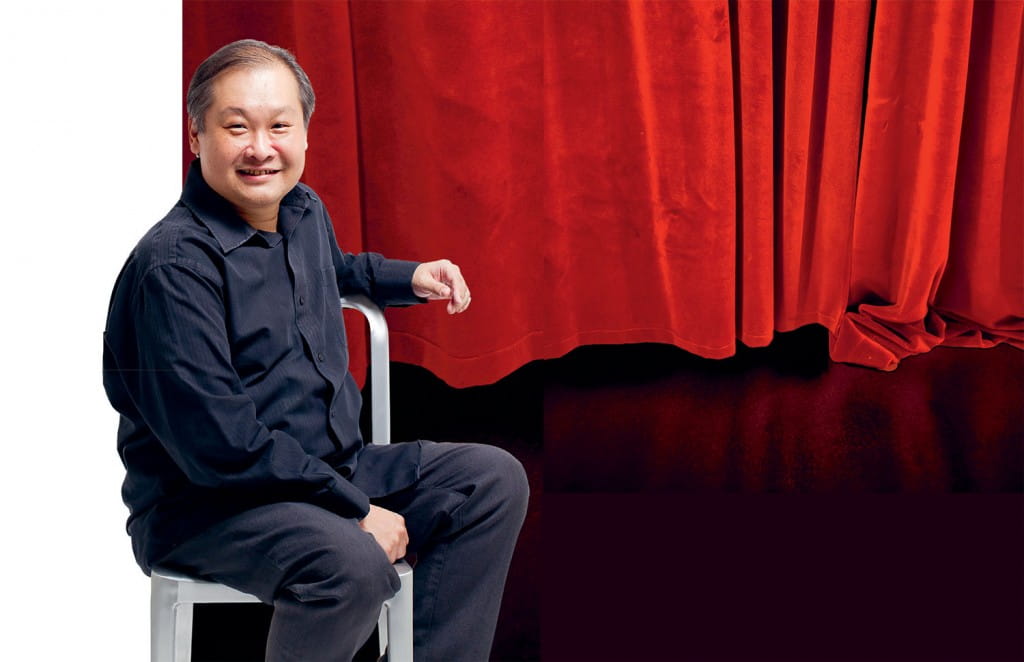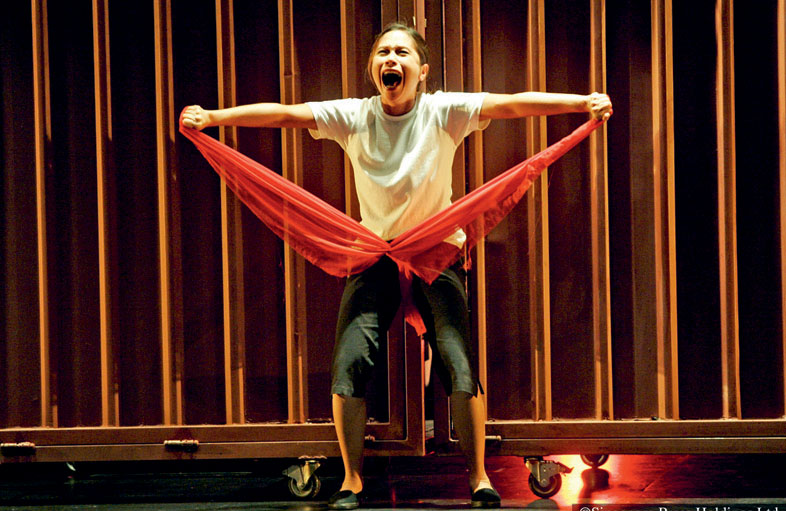Stories > The Ties That Bind
The Ties That Bind

ALVIN TAN SHARES HOW SOME OF HIS PLAYS HELPED BRIDGE CULTURES AND COMMUNITIES AND EFFECTED POSITIVE CHANGE:
ALVIN TAN, Cultural Medallion recipient and artistic director of theatre company The Necessary Stage, reflects on how the arts reaches out to different communities, from mental illness patients to overseas audiences.
PHOTOS SPH LIBRARY
ingapore was regarded as a cultural desert in the 1970s. While there were ethnic and cultural activities at that time, there was a need to develop a professional arts and cultural ecology.
Thus, the Singapore Arts Festival (a showcase of the local art of Singapore’s diverse communities) and the Drama Festival (a government initiative to revive the languishing local drama scene) were launched in the late 1970s to invigorate the local arts and cultural scene.
Following that, Singapore’s then Ministry of Community Development steadily incentivised the ground for arts development and distributed grants for the sector. The 1989 Report of the Advisory Council on Culture and the Arts led to the formation of the National Arts Council in Singapore, resulting in a greater focus on arts development.
Singapore has now progressed as a global arts and cultural city. There are more arts festivals, exhibitions and performances now than a decade ago. There is also a dynamic arts ecosystem nurturing Singapore’s growth and development as a culturally vibrant city, and local artists are increasingly making their mark on the world stage.
The Necessary Stage recognises the influential role artists play in connecting communities and strengthening inter-cultural understanding. We have worked with different communities through some of our productions. Through these works, our local artists have over the years, engaged both the local and international communities deeply.
Their collaborative works, with local and overseas counterparts, have also resulted in cultural cross-pollinations. This clearly illustrates the power of the arts as a means to connect, strengthen understanding and enrich lives amid differences and diversity.
OFF CENTRE
First staged in 1993, this play is about mental illness. We were commissioned by Singapore’s Ministry of Health and therefore gained access to different agencies dealing with mental illness, as well as people in various stages of their illness. Interviewing and encountering them allowed the playwright, director and cast to experience, document and be educated about the issue.
Because the artists could understand, internalise and connect to both the mental and physical psyche of patients, caregivers, social workers, psychiatrists and psychologists, we were also better equipped and ready to share this hidden world of mental illness sufferers, including their feelings and the social stigma that they face, with our audience. This resulted in a better understanding of mental illness sufferers.
MOBILE
We collaborated with theatre practitioners from Japan, Thailand, the Philippines and Singapore for this work, which was staged in 2006 during the Singapore Arts Festival. The creative team comprised four playwrights, one from each of the four countries, and two directors from Japan and Singapore. We interviewed sex workers at shelters in Thailand, Filipinos working in Tokyo, and migrant workers in Singapore.
These deepened our understanding of how our economies affected one another. We learned that while Singapore and Japan provided job opportunities to migrants from the Philippines and Thailand, it also exposed them to systemic injustices due to economic disparities between the countries. The work toured Malaysia and Japan.
countries. The work toured Malaysia and Japan. In Japan, the audience was quite awestruck by the multicultural and multilingual work.
Most cultural productions there were performed in Japanese, but Mobile was in four languages, with Japanese and English subtitles.
They found the experience peculiar, and were interested in the creative methodology behind such a work. For them, sharing the creative space in a collaborative manner was alien to the hierarchical work style they were used to.

A scene from Mobile, a collaboration between theatre practitioners from Singapore, Thailand, Japan and the Philippines.
MOBILE 2: FLAT CITIES
This play addresses the Japanese Occupation of Singapore during World War Two, and examines both our present and possible future relationships.
We worked with two communities of actors: three young Japanese and two Singaporeans, as well as two older Japanese living in Kuala Lumpur and Singapore.
The older actors served as a bridge between the younger group, and Haresh Sharma, our resident playwright, and myself, the director.
For instance, the younger Japanese actors were motivated to search for a more holistic knowledge of Japan’s historical relationship with South-east Asia during the war after an older actor shared how he was often offered the role of a cruel Japanese soldier in plays in Malaysia.
The play connected across cultural and generational lines, allowing us to contemplate our future by examining – not evading – our historical relationship.
Our relationship with Japan changed with our Government encouraging its people to learn from Japan, while younger generation Singaporeans no longer harped on the war and became admirers of Japanese art and culture.
The healing of historical scars would likely begin first between Japan and South-east Asia in the near future, than between Japan and East Asia.
